The last full month of winter was a very dry one, with hardly any rainfall. It looks set to be one of the driest on record. There were a few cold frosty days but February was generally a mild month, with plenty of sunshine and some days with much warmer than normal temperatures. Despite the lack of rain, green shoots are starting to appear on many of the trees and shrubs and the Spring Bank West verge is showing plenty of new growth. The rainfall of previous months probably left the ground wet enough to sustain this growth and the cemetery wildlife.
Plants and Flowers
The Celandines I mentioned in my January report are now opening up in good numbers along the Spring Bank West verge. I’ve also seen plenty of them inside the cemetery. They provide an important source of food for the smaller branch of the cemetery wildlife, and are featured above.
Another early flowering plant is the Blackthorn. Every time I walk past a particular one it has more and more flowers open. The flowers appear before the leaves.
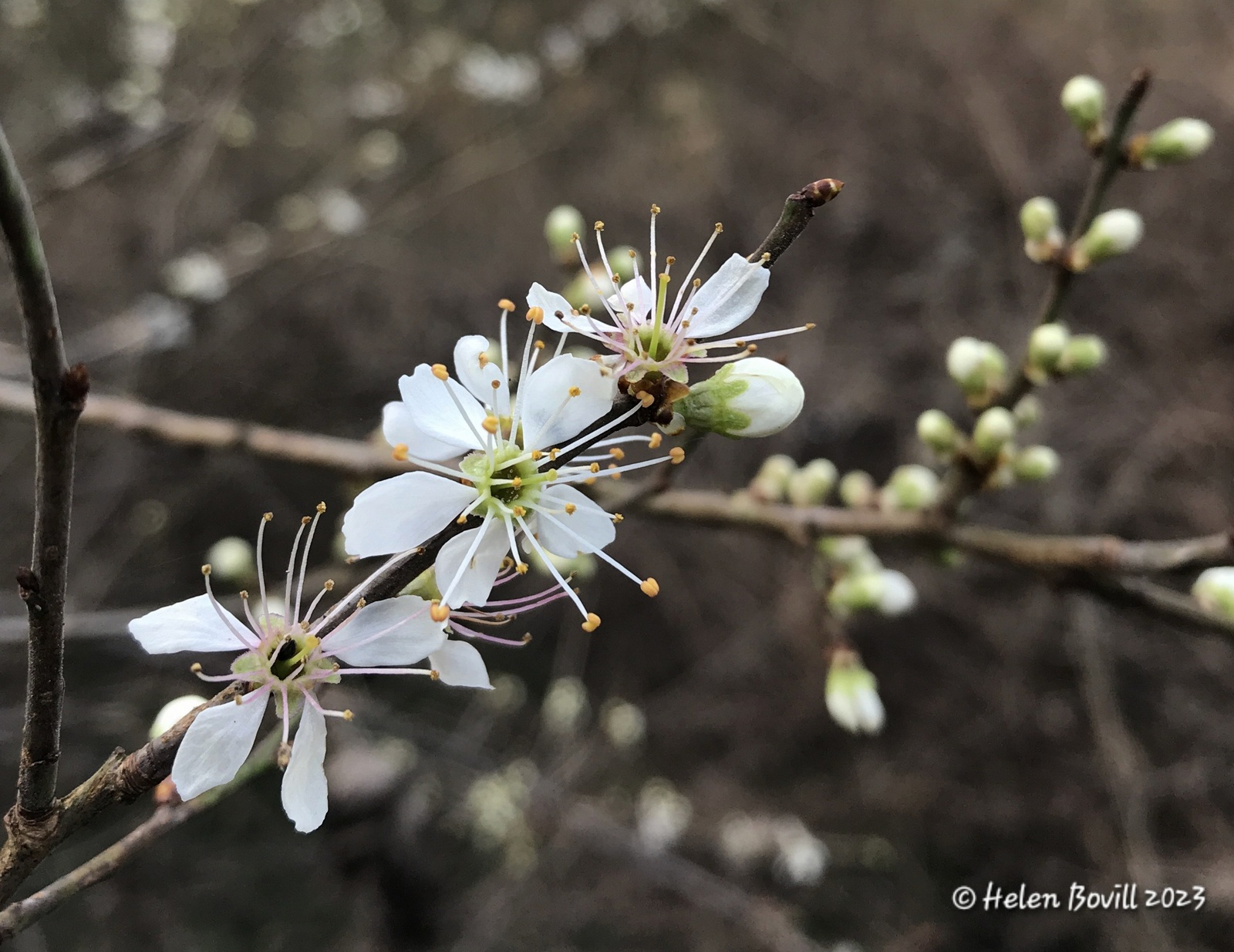
February is the peak time for Snowdrops in the cemetery, and there are now a few Daffodils starting to open.
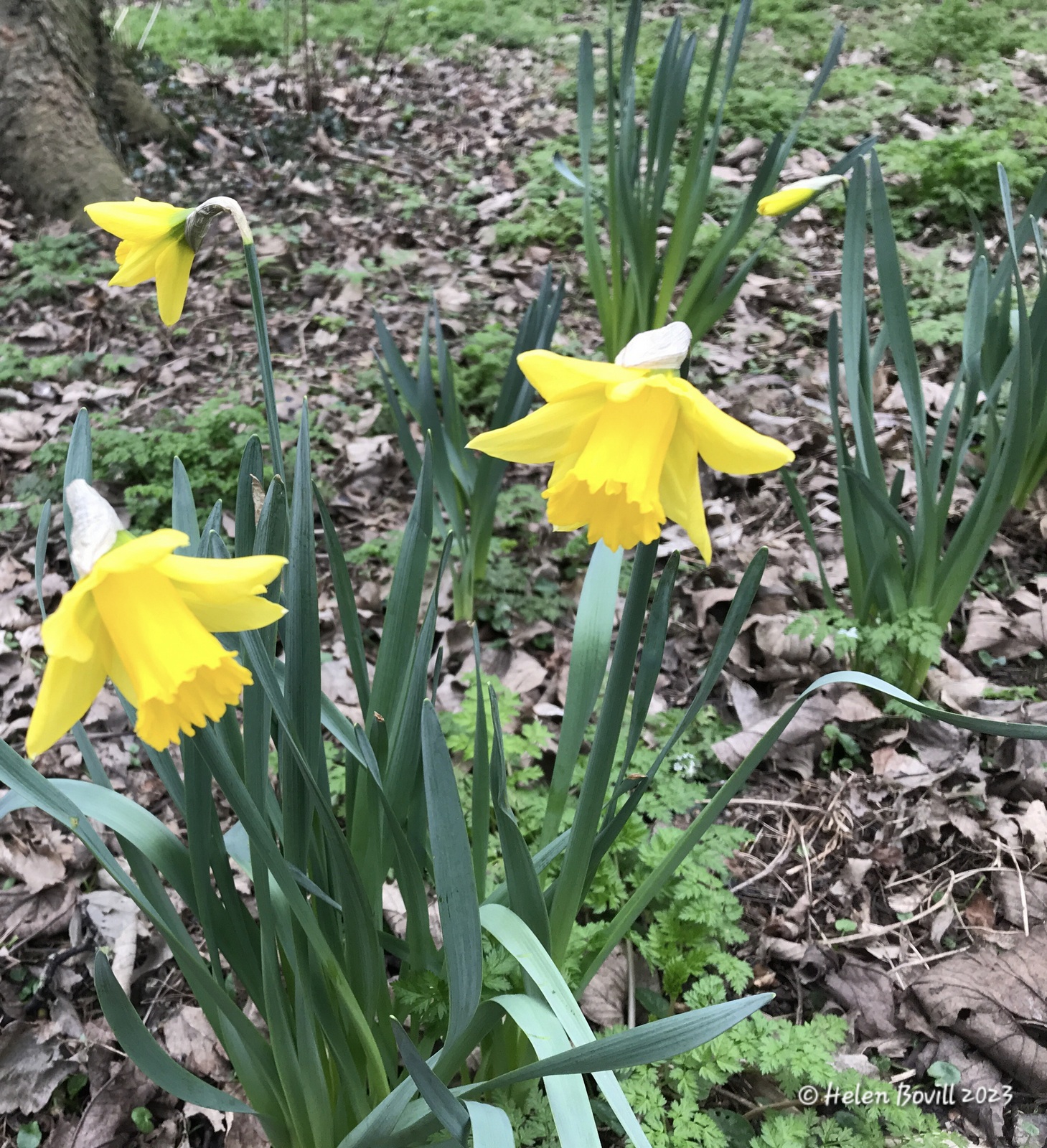
I saw the above ones inside the cemetery but there are also some open on the grass verge. There are probably over a dozen different varieties of Daffodils growing in and around the cemetery. But at the moment there are just the variety pictured above and a few miniature Tete-a-Tete ones to be seen. The latter were planted by the volunteers a couple of years ago.
I also spotted some tiny purple flowers near one of the headstones. These are Common Dog-Violets.
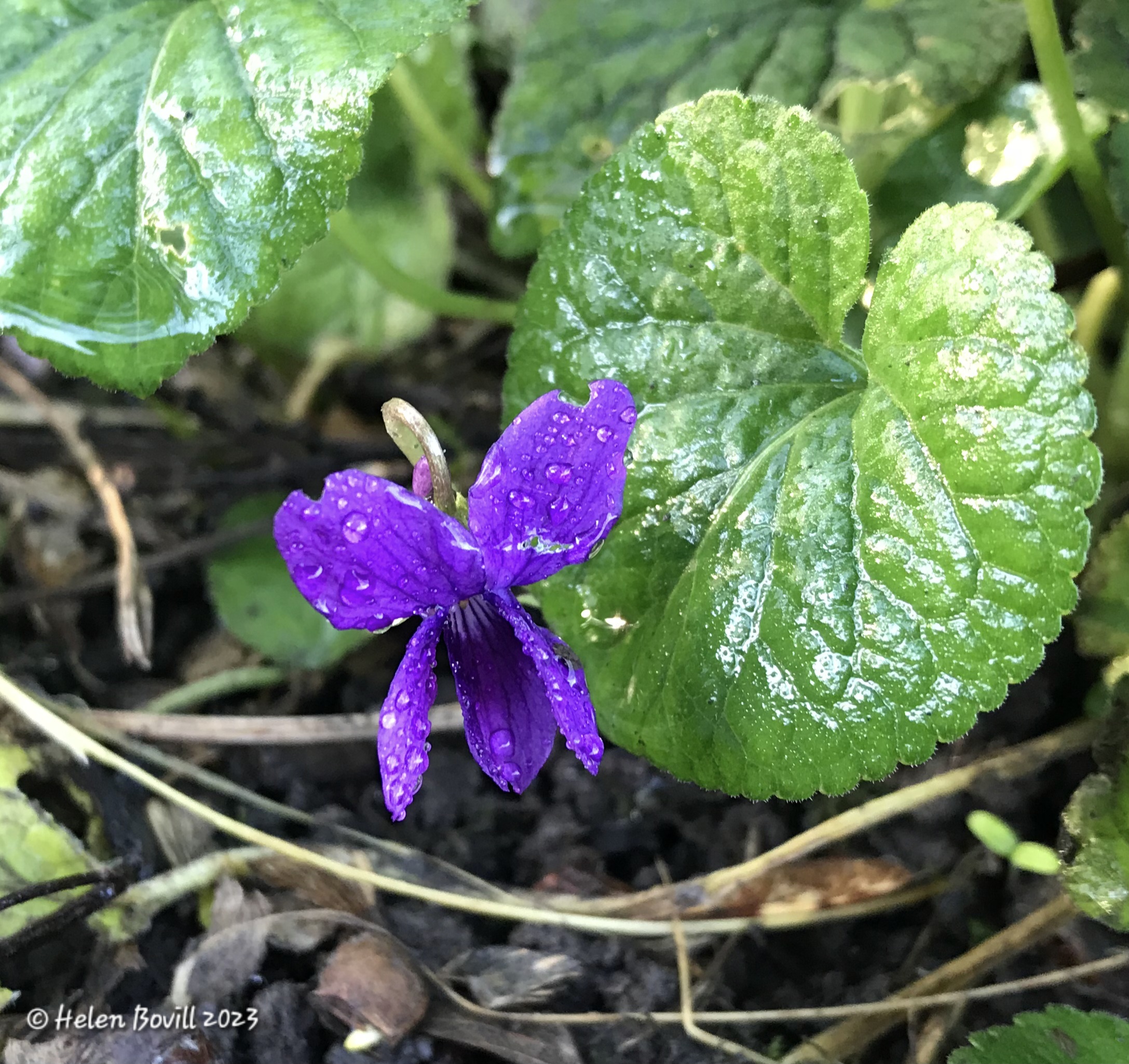
I also spotted a couple of Dandelions in flower. It won’t be long before the Forsythia near the main gates is in full bloom because a few flowers have already started to open.
I’m now seeing lots of ripe Ivy berries – great food for the feathered branch of the cemetery wildlife. I’ve seen Wood Pigeons, Blackbirds and Blackcaps eating them.

Insects
How nice it is to be writing about insects again! Those warm, sunny days in mid-February helped the Celandines to flower and the insects to emerge. The highlight of the month for me was seeing my first Butterfly of the year – this Small Tortoiseshell – well before the end of the month. I’ve included a link at the end of this report for more information about these butterflies.

But a week before that, one of my fellow volunteers saw a Comma. It was also on the Spring Bank West verge.
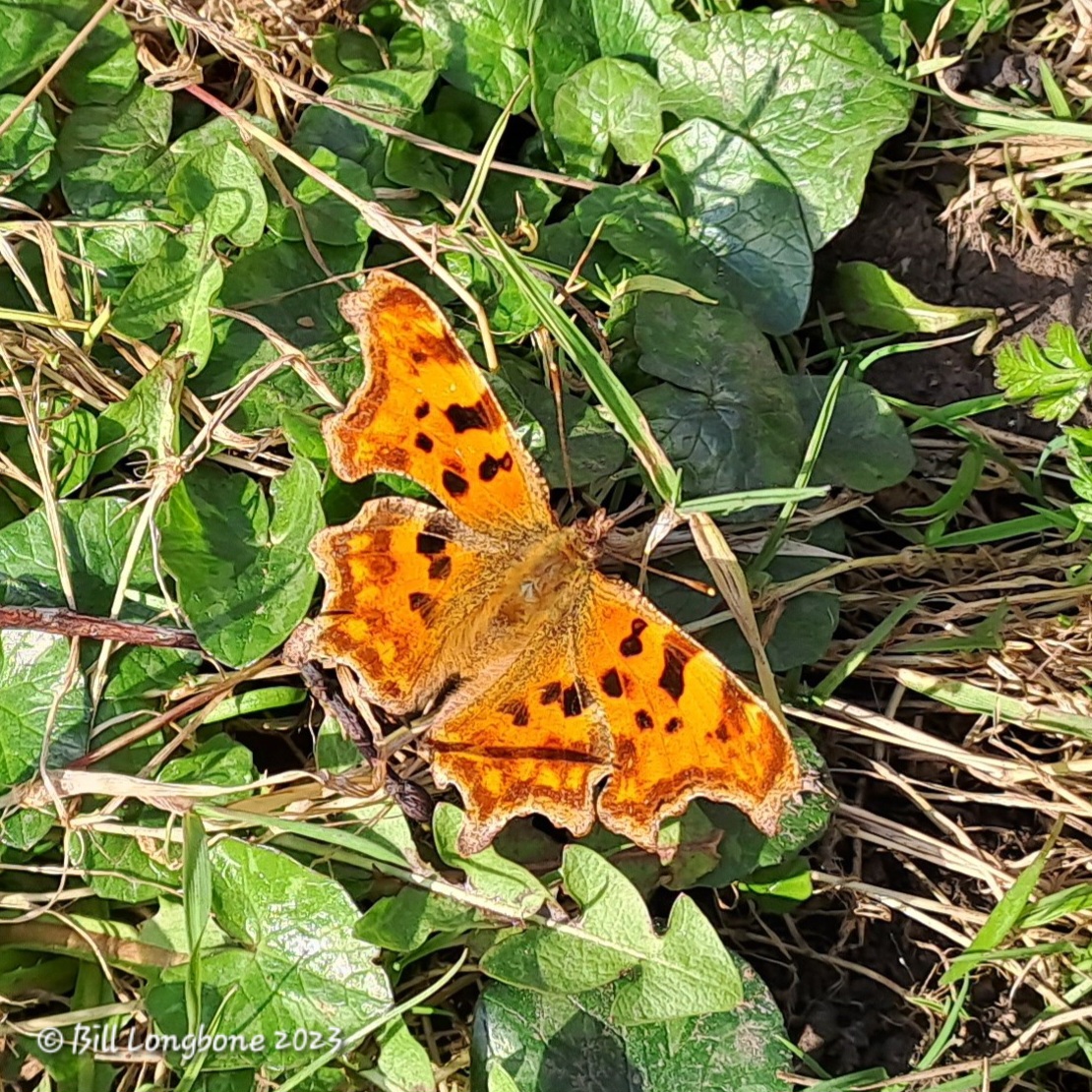
I’m hoping to see a quite a few more different species of butterfly in the coming months. It will be interesting to see what the new plants set by the volunteers back in November might attract.
I also got a quick glimpse of a Bee – possibly a White-tailed Bumblebee – feeding on Snowdrops. But the most abundant insects were hoverflies and I saw at least three different species. This is a Marmalade hoverfly (Episyrphus balteatus). The ones seen early in the year sometimes have darker markings near the head than the ones seen in summer.

Not all hoverflies have a common name but they do all have scientific names so I’ll use those as well.


Note how they’re all feeding on Celdandines, proving how essential this lovely little wildflower is to the cemetery wildlife in late winter. I also saw plenty of Ladybirds, all of which were the native Seven-spot ones. These are very easy to identify because they have three spots on each side of the outer casing (known as the elytra) and a seventh, larger spot straddling both parts of it at the top near the head.

Birds
The small birds of the cemetery are very active, starting to form pairs and checking out nesting sites, including this pair of Robins. They seem to prefer low shrubs and bushes in the cemetery whereas the Blue Tits tend to use the various nest boxes around the site.
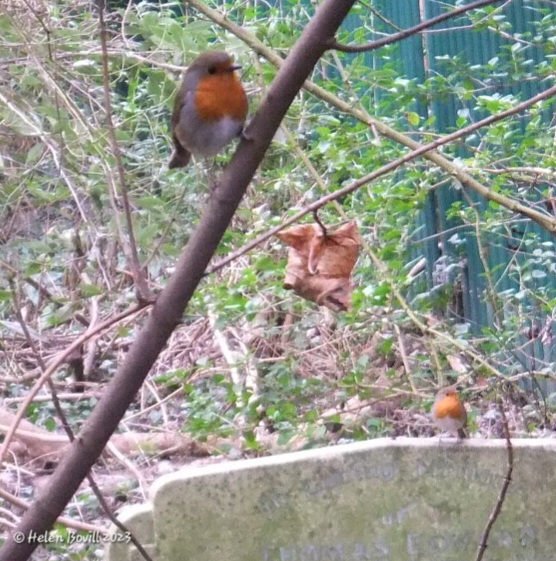

I also saw Goldcrests very high up in the trees, Wood Pigeons, Magpies, Stock Doves and Carrion Crows. I was able to get quite close to this one, but as soon as it saw me looking it was off!

Two of my fellow volunteers did their RSPB Birdwatch in the cemetery, and saw a Sparrowhawk. I’ve added this to the cemetery bird list I’m compiling, making it 19 different species now.
Conclusion
Spring is just around the corner. Why not enjoy a stroll around the cemetery while the footpaths are still dry and enjoy the sight of hundreds of Snowdrops carpeting the ground? And don’t forget to look out for the cemetery wildlife too – be sure to look up as well as down though!
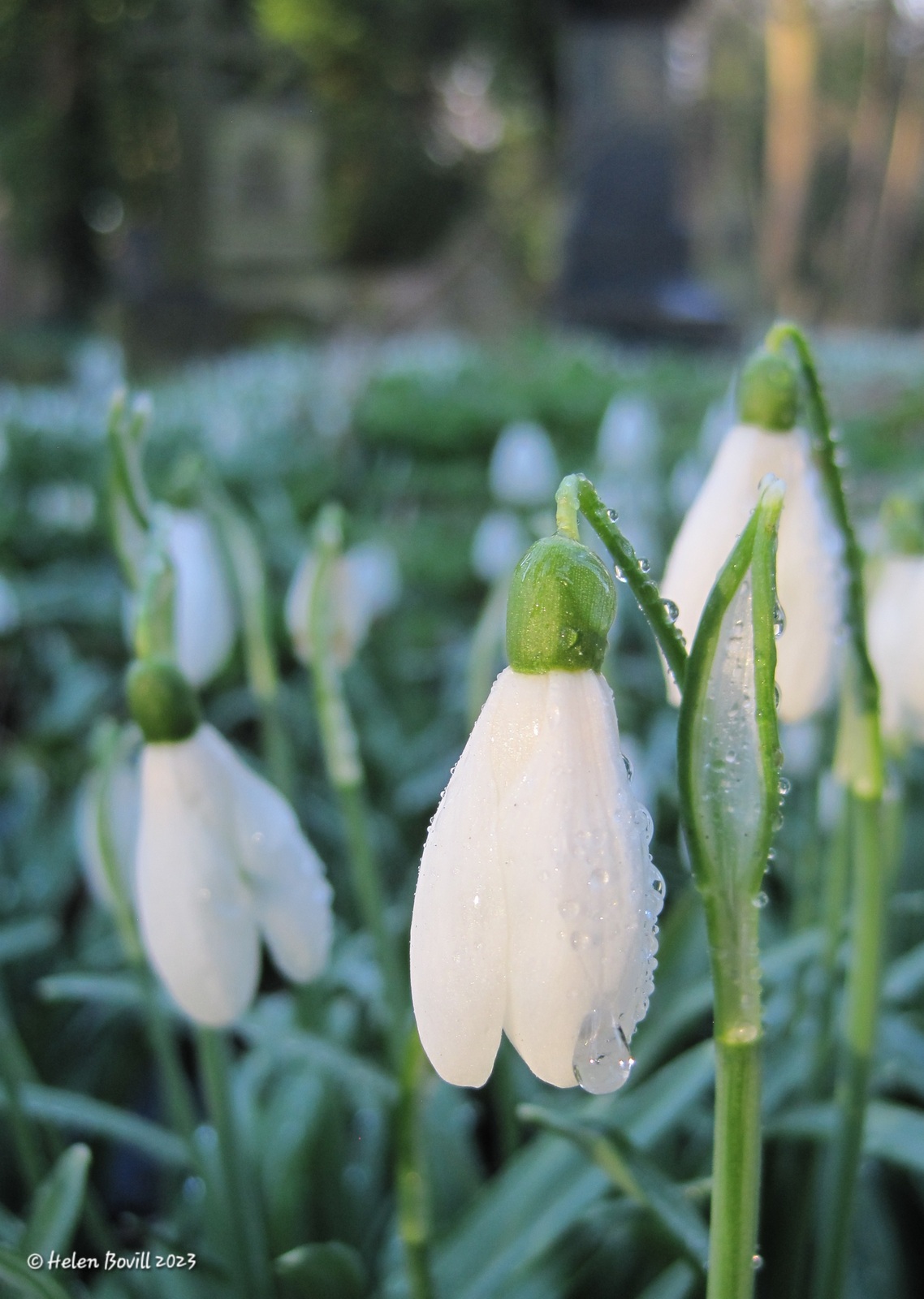
Link to more information about Small Tortoiseshell butterflies:-
https://butterfly-conservation.org/butterflies/small-tortoiseshell



Thanks for the detailed wildlife report Helen, it shows what a varied habitat the cemetery provides.
Beautiful update of the cemetery starting to bloom and attract the wild life. Thank you.